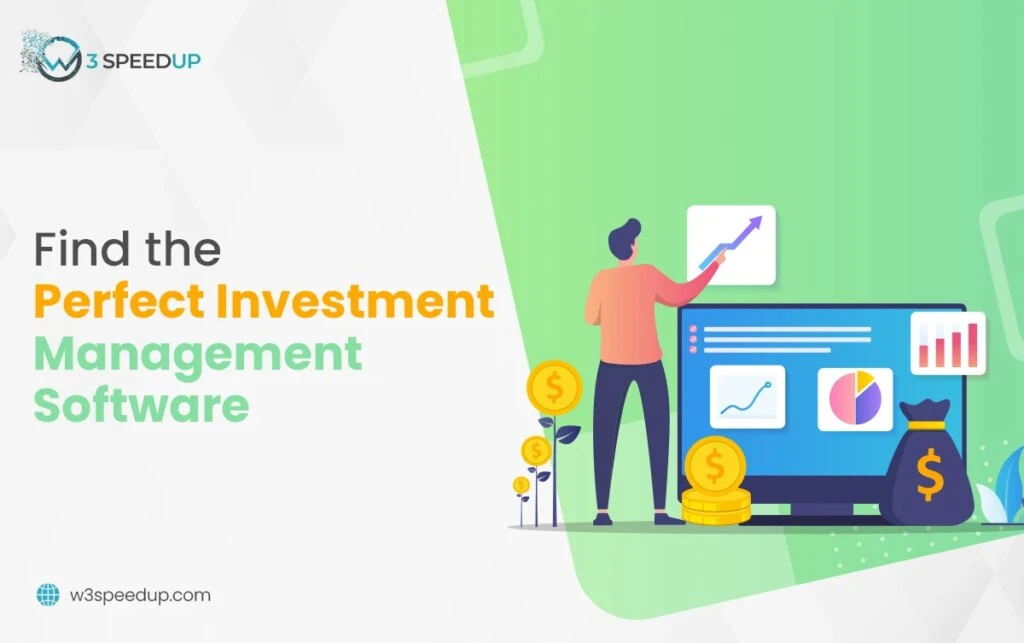In the rapidly evolving world of finance, it’s vital to choose the right investment management software. It can help you streamline operations, make data-driven decisions, and enhance financial outcomes. You may be an individual investor looking to optimize your portfolio, or a seasoned professional managing multiple client accounts. This article discusses the key considerations when selecting investment management software.
Key Factors to Consider When Choosing Investment Management Software
 Identify Your Financial Goals
Identify Your Financial Goals
You need to choose what to invest in, and assess your attitude to risk. You should also align your investments with your life aspirations. These may include buying a home, retiring early, or funding education for your children. Short-term goals might include saving for a vacation, buying a car, or paying off debt. Long-term goals could involve building a retirement nest egg or establishing generational wealth.
This step can help you create actionable milestones, transforming vague ambitions into achievable targets. This structured approach can enhance your focus and allow for easier tracking within your investment platform. In turn, you can ensure that every financial decision moves you closer to realizing your dreams.
 Compare Different Software Options
Compare Different Software Options
Some platforms provide advanced portfolio analytics and risk assessment tools. These can transform data into actionable insights, which is key for investors aiming for precise market timing. Niche platforms might offer specialized services, targeting particular asset classes or investment strategies. This can be ideal for experienced professionals looking to sharpen their competitive edge in a specialized market landscape.
You may be an institutional investment manager seeking a system that manages the entire investment lifecycle. The popularity of companies such as Limina confirms the demand for cloud-native platforms that decrease costs and operational risks. Asset managers want to boost productivity and enable front office and operations resources to focus on the right tasks. They also want to reduce the time spent launching new investment strategies and developing their operating models.
 Evaluate User Experience And Interface
Evaluate User Experience And Interface
Software that adapts to your investing style or provides tailored insights can give you a competitive edge in the market. In terms of UX (user experience), seek options offering customizable dashboards or alert systems. These features save time and present information in the right format for you to maximize it.
An intuitive UI (user interface) can significantly enhance your productivity, allowing you to easily navigate complex features. Imagine being able to access portfolio analytics and market trends effortlessly. This helpful simplification can lead to smarter decision-making and more timely actions.
 Consider Cost And Budget
Consider Cost And Budget
It’s sensible to weigh the initial costs against potential longer-term benefits. A more expensive solution may offer superior features, enhancing your portfolio management over time. Instead of getting swayed by initial price tags, evaluate the return on investment (ROI) offered by each software provider.
Factor in ongoing costs such as subscription fees, training expenses, and maintenance charges. A scalable solution might be worth slightly higher costs initially. It could grow alongside your needs, without requiring frequent replacements or upgrades.
 Look For Integration With Other Financial Tools
Look For Integration With Other Financial Tools
This can be more economical than choosing a cheaper solution requiring extensive workarounds or additional training. Imagine your trading platform synching effortlessly with your budgeting app and tax software. This synergy eliminates tedious manual entry and enhances accuracy across your financial records. This integration allows for real-time data sharing, so you can make informed decisions, based on a holistic view of your finances.
Look for solutions that connect with CRM systems or market analysis tools. They can empower you to track investments more effectively, and better manage client relationships (if you’re in the advisory space). By accessing consolidated analytics, you can uncover opportunities – or anticipate potential risks before they materialize.
 Assess Customer Support And Resources Availability
Assess Customer Support And Resources Availability
Your software provider needs to be responsive to your questions whenever you’re working. They also need to understand your unique financial situation. Don’t only focus on traditional channels like phone or email. Consider whether they offer live chat, comprehensive FAQs, and interactive tutorials.
Find out whether they offer educational materials, webinars, or community forums. These can help you use the software proficiently, ask questions, and enhance your overall investment acumen. A strong community presence suggests a commitment to ongoing user engagement and improvement. These qualities are essential for adapting to an ever-changing financial environment.
Don’t forget to read reviews and testimonials, and make the most of trial periods. It’s vital to carefully assess your needs, and understand the features offered by various solutions. Choose a platform that aligns with your current requirements, and adapts to future developments in your investment strategy. In turn, your software can be the powerhouse that helps you achieve your financial goals.
 Christmas Mega Sale – Enjoy Up to 50% OFF on Every Plan!
Christmas Mega Sale – Enjoy Up to 50% OFF on Every Plan! 


